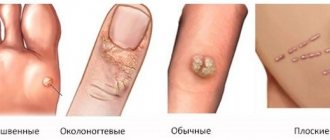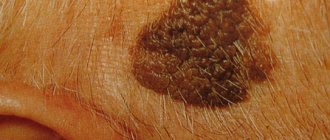Genital warts are a common infection that is sexually transmitted. Warts can develop on or near the genitals. Such formations usually look like small tubercles or fleshy growths.
Genital warts develop against the background of the human papillomavirus (HPV). Infected people can spread the virus to others through vaginal, anal and oral sex.
Genital warts cause discomfort, but they do not cause other health problems and are not cancerous.
Doctors prescribe medications to relieve symptoms. They may also offer surgical removal of genital warts.
In this current article, we will talk about the symptoms and causes of genital warts in women, and also discuss the risks associated with them.
In addition, we will discuss the diagnosis, treatment, potential complications, and prevention of warts.
Symptoms
In women, genital warts can develop in the vaginal and vulva areas
Genital warts can occur in anyone. In women, they usually affect the following parts of the body:
- vagina;
- vulva;
- cervix;
- anus;
- groin area and upper thighs.
Because the virus can spread through oral sexual contact, warts can also appear on the lips, mouth, and throat.
Genital warts usually appear as small, firm bumps or growths. The number of warts varies from woman to woman, and groups of warts can develop in formations that resemble cauliflower in appearance.
Genital warts are, in most cases, skin-colored or slightly darker. Such formations can be smooth or rough. Sometimes they are so small that people don't notice them.
Quite often, genital warts do not cause symptoms. However, if problems do occur, they may include the following:
- itching;
- burning;
- soreness or sensitivity;
- bleeding.
Differential diagnosis of warts in the vagina
A common problem in differential diagnosis is the question of what is the difference between condyloma lata due to syphilis and warts in the vagina.
True, it is more often necessary to distinguish between such formations located in the anal area.
The main differences between genital and lata condylomas:
- syphilitic formations have a wide stem, and HPV-provoked ones have a narrow stem;
- with syphilis the formations are dense, with HPV they are soft;
- The color of genital warts is usually dark red, lilac, red, anal condylomas are flesh-colored, pinkish.
Formations on the uterine cervix are also of two types:
- exophytic – absolutely similar in appearance to external anogenital formations;
- endophytic (otherwise flat) – located in the epithelial layer, virtually invisible, can become malignant (in approximately 4–10% of cases over two years).
If warts appear in the vagina or on the labia, then subjectively at the site of the lesion the following may be felt:
- itching, tingling, burning, discomfort;
- pain during sexual intercourse;
- bleeding, cracks.
If formations occur in the area of the urethra, then in addition to the above manifestations, pain and difficulty urinating are sometimes noted.
Cervical condylomas usually have no symptoms and can only be detected during a special gynecological examination.
Causes
Genital warts are caused by the human papillomavirus entering the body. This disease is classified as a sexually transmitted infection (STI).
HPV is the most common STI, affecting hundreds of millions of people around the planet. The age of such patients usually does not exceed 30 years. Every year, world medicine records several tens of millions of new cases of HPV.
Infected people can transmit HPV through:
- vaginal, anal and oral sexual contact;
- touching skin areas in the genital area.
HPV can also be transmitted to an infant through passage through the birth canal of an infected mother.
Genital warts do not always appear immediately after the virus enters the body. Sometimes people start to face this problem only after a few months.
Most people are able to effectively fight the human papillomavirus without treatment, and in such cases the infection does not harm the body, and after recovery, people can no longer transmit it to others.
There are several types of HPV. The type that causes the development of genital warts cannot cause cancer.
Diagnostics
The pathology is diagnosed and treatment is prescribed by specialists - a gynecologist, urologist and immunologist. After collecting anamnesis, the patient is examined. The doctor visually identifies visible genital warts. Using special instruments, they also examine the cervix and take a smear for cytology. The following procedures are also carried out:
To treat and get rid of PAPILLOMAS and WARTS, many of our readers actively use the well-known method based on natural ingredients, discovered by Elena Malysheva. We recommend that you check it out.
- A Pap test based on a smear confirms the presence of the virus (HPV).
Polymerase chain reaction (PCR) identifies HPV and determines its oncogenicity, that is, the risk of further degeneration of the tumor.
- Colposcopy helps examine the cervix and vagina for the presence of genital (anogenital) warts, collect a smear for cytology and, if necessary, a biopsy sample for examination.
- If there are condylomas in the anus and urethra, anoscopy and urethroscopy are used.
Once the diagnosis is made, treatment methods for genital warts are determined. Use complex drug treatment with external medications:
- Clinical evaluation, sometimes including colposcopy, anoscopy, or both.
Genital warts are usually diagnosed clinically. Their appearance usually differs from condylomas lata of secondary syphilis, which are characterized by a flat apex.
However, serological tests for syphilis (STS) should be done initially and 3 months later. A biopsy of atypical, bleeding, ulcerating, or persistent warts may be necessary to rule out carcinoma.
- Inspection. One of the simplest methods for diagnosing the presence of condylomas inside the vagina in women is to examine the genitals using a gynecological speculum.
- The colposcopy procedure is performed with a special colposcope device, which significantly enlarges the image of hidden condylomas.
- Histological examination. Laboratory assistants examine biomaterial (a smear taken from the cervix) for cancer cells.
- A biopsy involves excision of a piece of tissue sample for the purpose of laboratory determination of cancer.
- PCR analysis determines the presence of human papillomavirus in a smear.
To establish a diagnosis, a gynecologist needs a complete diagnosis:
- History of the disease. It includes knowledge of information:
- how long ago the growths appeared;
- whether there were unprotected intimate relationships;
- how long ago the last act of this kind took place.
- Examination by a gynecologist. In this case, the affected epithelial cells are collected for subsequent PCR analysis.
- PCR diagnostics. In this analysis, the number of pathogens and the type of papilloma viral infection are determined.
- Linked immunosorbent assay. It is necessary to confirm the presence of antibodies to the virus in a person. Based on which, one can judge the degree of development of HPV in the human body.
- Colposcopy. Inspection of the vaginal walls to determine damaged areas. It is carried out using a special colposcope device and staining the cervix with iodine solution.
- Anoscopy. Involves examining the anal area for the presence of papillomas.
- Cytological examination. Study of cells under a microscope, detection of damaged areas and their characteristics.
- Histological analysis. Studying the structure of damaged areas.
- Oncocytology. Study of cells in scrapings from the cervix and cervical canal under microscope magnification.
When papillomatosis is confirmed, timely treatment and correct selection of therapy are necessary.
Diagnosing this disease is not a difficult task. Anogenital warts grow and are clearly visible on the labia or penis. It is difficult to diagnose early disease when the condylomas are very small. They look like roughness on the skin in the intimate area.
Treatment
Your doctor may prescribe topical medications to treat HPV symptoms.
There is currently no cure for HPV. Over time, the immune system usually eliminates its manifestations on its own.
If genital warts cause physical or psychological discomfort, your doctor may prescribe medications to relieve symptoms or remove the warts surgically. This treatment also helps reduce the risk of transmitting the infection to others.
Topical medications used to treat genital warts include the following:
- podophyllotoxin;
- imiquimod;
- podophyllin;
- trichloroacetic acid.
Doctors usually recommend surgical removal to those patients whose warts are difficult to treat or are large in size. To solve the problem, the following types of operations can be used.
- Cryotherapy. This procedure involves freezing the warts with liquid nitrogen. Cryotherapy may cause a burning sensation, as well as pain and blistering.
- Surgical excision. During this operation, the doctor cuts off the warts. Before the procedure, patients are given local anesthesia to numb the area where tissue will be removed.
- Electrocautery. During this procedure, the doctor burns off the warts using electrical devices. The patient may require local anesthesia.
- Laser therapy. The surgeon uses a powerful beam of light to destroy the warts. Pain and irritation may occur after laser therapy.
When treating genital warts, you should not use therapeutic approaches that are used to treat other types of warts, as this may worsen symptoms.
Removing genital warts does not eliminate HPV from the body. After treatment, the infection sometimes makes itself felt again. In addition, it remains possible to transmit it to other people.
Complications
If genital warts develop, the doctor may suggest a woman be tested for cervical cancer.
There are more than 100 types of HPV. The types of virus that cause the development of genital warts do not cause cancer. Even if a person does not treat genital warts, they cannot become cancerous.
However, some people have more than one type of HPV. Moreover, about 14 of its species can cause various types of cancer, including cervical cancer.
When a woman is diagnosed with genital warts, her doctor may suggest testing for cervical cancer or types of HPV that are associated with a high risk of malignant transformation.
American doctors recommend that women undergo the following types of examinations:
- at the age of 21 to 29 years - Papanicolaou test once every three years;
- aged 30 to 65 years - Pap test every three years or Pap test in combination with an HPV test every five years.
If the Pap test is unclear or abnormal, it does not necessarily mean that the cervix has cancer cells. In such situations, doctors offer patients additional examinations to better see changes in the organ.
Pregnant women who have previously dealt with genital warts should tell their doctor, although the problem very rarely affects children and does not usually cause complications during pregnancy.
Genital warts can make childbirth somewhat more difficult.
Diagnostic measures
To identify the cause of the disease, the gynecologist conducts a thorough examination of the tumors using magnifying glasses. To exclude the development of diseases similar in symptoms to papillomatosis, patients are prescribed a set of diagnostic measures:
- PCR is a test to identify the type of virus;
A colposcopy is performed to diagnose a woman’s condition.
- colposcopy - to assess the condition of the cervix and its endometrium;
- biopsy (if a malignant process is suspected);
- tests with acetic acid;
- urethroscopy.
If cancer is suspected, patients are additionally prescribed cytological and histological analysis of papilloma tissue. To exclude infection of the genitourinary system, a smear is taken from the vagina and urethra, and blood is collected to determine antibodies to STDs.
Prevention
By using condoms during sexual activity, you can reduce the risk of developing genital warts, but you should understand that such products do not completely cover the genital area, so they do not provide 100% protection.
Any other methods of contraception are not able to prevent the appearance of genital warts.
People who have genital warts should tell their partners that they have HPV.
Vaccination provides reliable protection against those types of HPV that cause the development of genital warts and cervical cancer.
CDC experts recommend that all children ages 11 to 12 and all women ages 13 to 26 be vaccinated.
The U.S. Department of Health's Office of Women's Health and the U.S. Food and Drug Administration approve the use of human papillomavirus vaccines for all people ages 9 to 45 years.
People who suffer from severe allergic reactions to yeast should consult a doctor before receiving the vaccine.
In addition, the above organizations and departments do not recommend that pregnant women be vaccinated.
Quitting smoking completely is another measure that can reduce the risk of developing genital warts.











